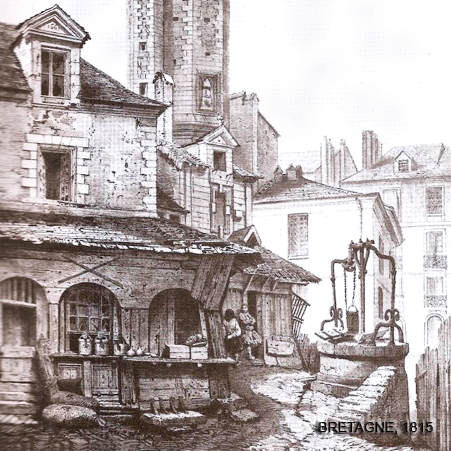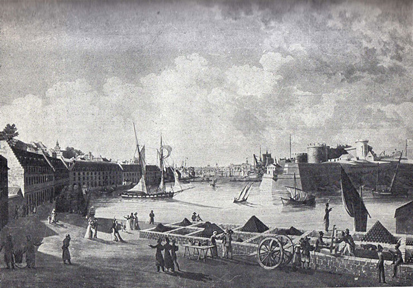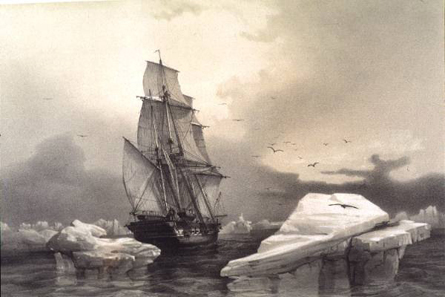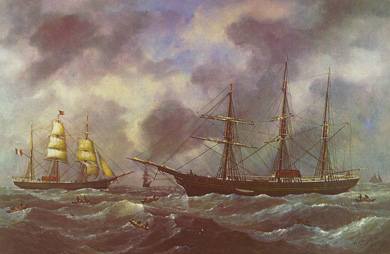|
Laurent René was born in St Servan 7 months after his parents, Georges Cyprien
and Anne Dugast, were deported in 1778 to France by the englishmen.
On 1783, restoring St Pierre et Miquelon to the french domination, he
returned to the Islands with all his family. But in 1787 they are all back
in France,
this time in La Rochelle, where Georges Cyprien died that
year, when Laurent was 8 years old. In 1789 bursts the French Revolution,
and Laurent witnessed the age of the Robespierre Reign of Terror and how Louis XVI y
Marie Antoinette were guillotined in 1793. On 1804 Napoleon Bonaparte is
crowned Emperor of France, and after he was defeated in the Battle of
Trafalgar in hands of Great Britain, he militarized the whole Navy,
creating the Grande Armée. Laurent René entered to the French Navy.
Marriages of the Navy Officers used to be delayed until the end of their
careers, and showing a notable endogamy, almost always with Marine
Officers' daughters. |
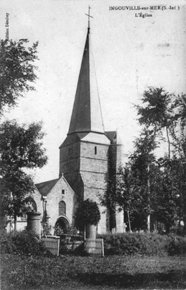
Ingouville: The Church |
Laurent was married in Ingouville,
Le Havre at that time, on October 2nd. 1802, with Marie Louise Félicité Turgot,
daughter of Louis Turgot, from Miquelon, and of Louise Hebert. Marie Louise
Turgot's father was also an officer of the French Navy.
In 1814 , at his 35 years, Laurent René is
admitted at the Brest Navy with the degree of Captain.
At that time he was already living with his wife, and his mother, Anne Dugas, 71 years old, at Brest.
On 1815 he is shipped on board of the Royal
Barge "La Pourvoyuse" and made prisoner by the englishmen on June
24th at that year, a week after Napoleon is definitevely defeated in the
Battle of Waterloo, during the war against Great Britain and his allies.
On December 12th 1815 Laurent is embarked as Captain of the Royal Barge "La Prèvoyante",
coming back to Brest on October 1816.
(Click
to see document of the Brest Navy) |

